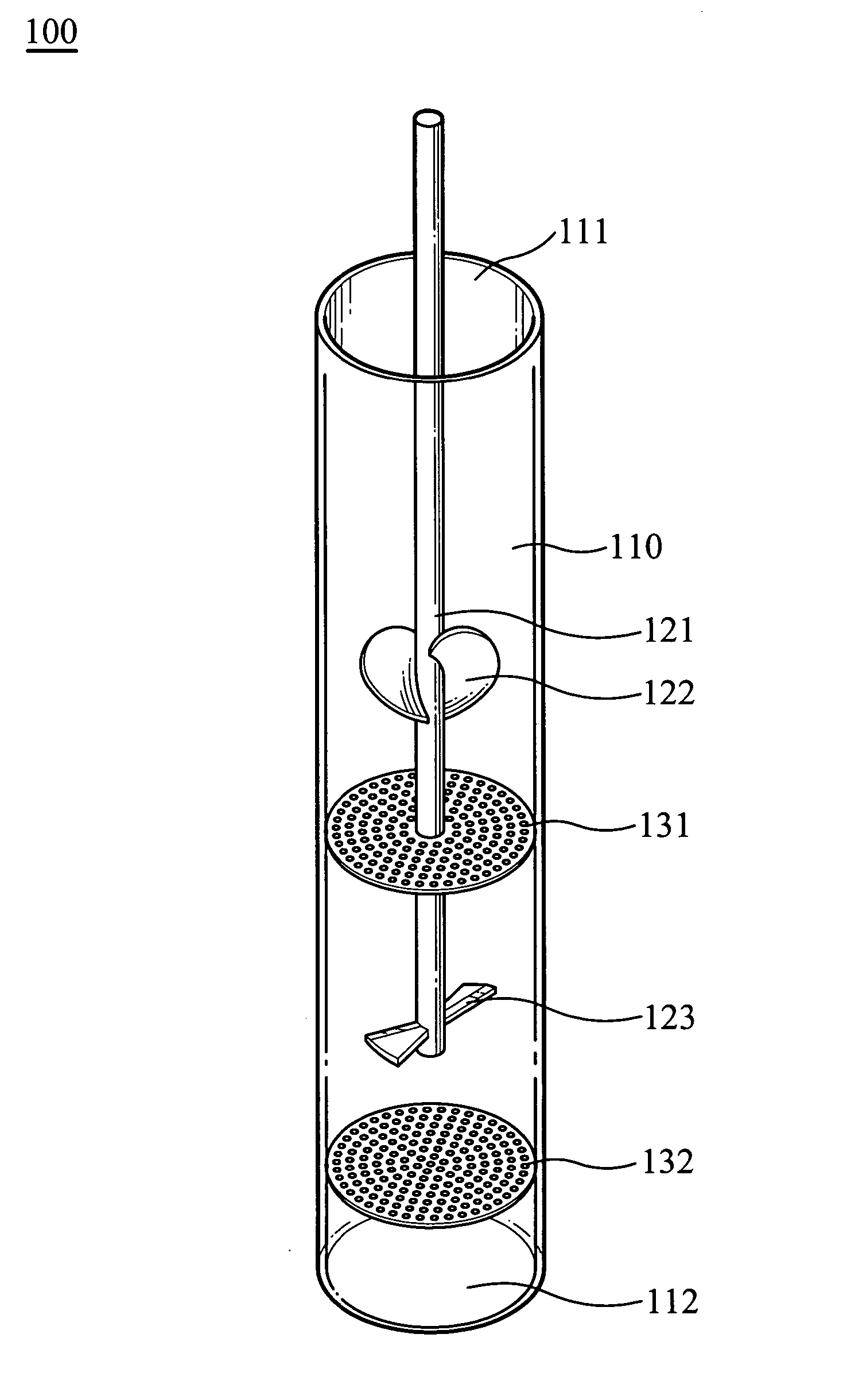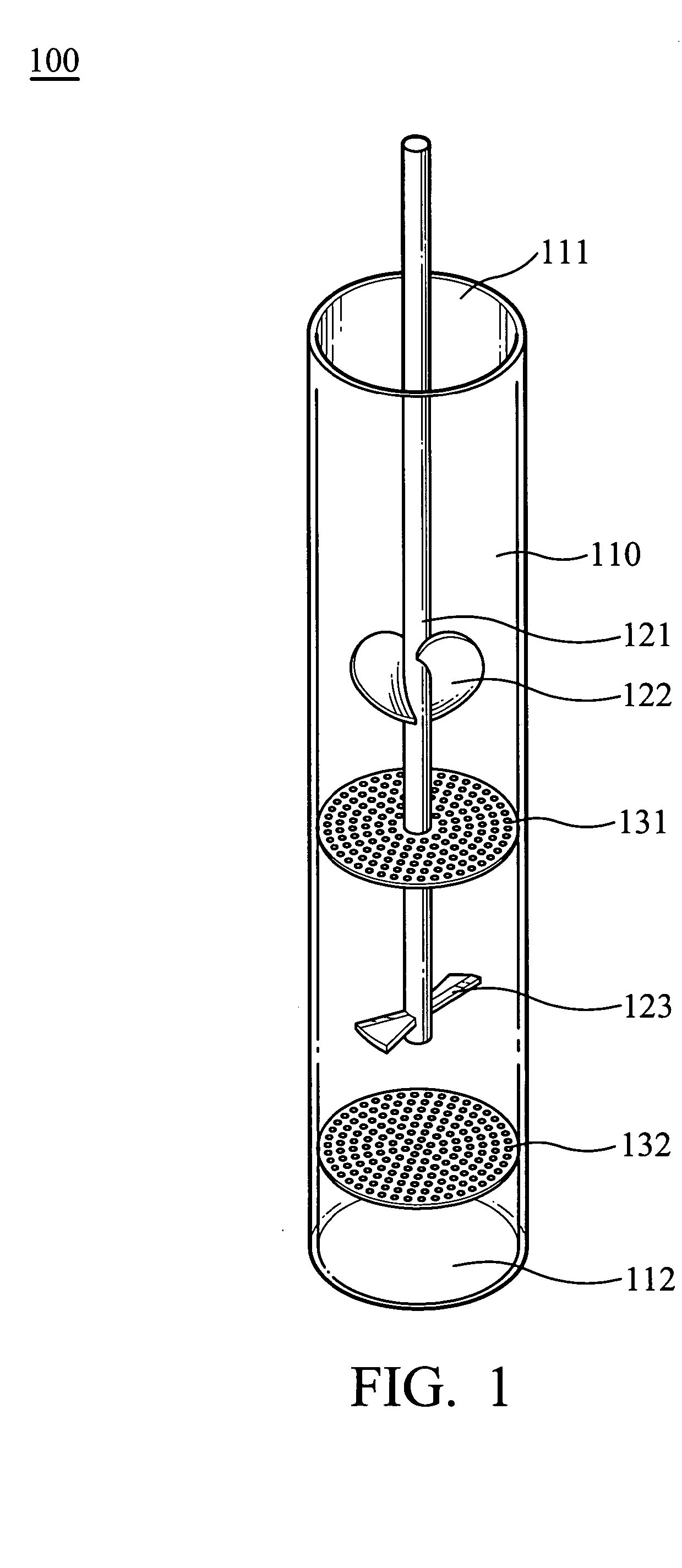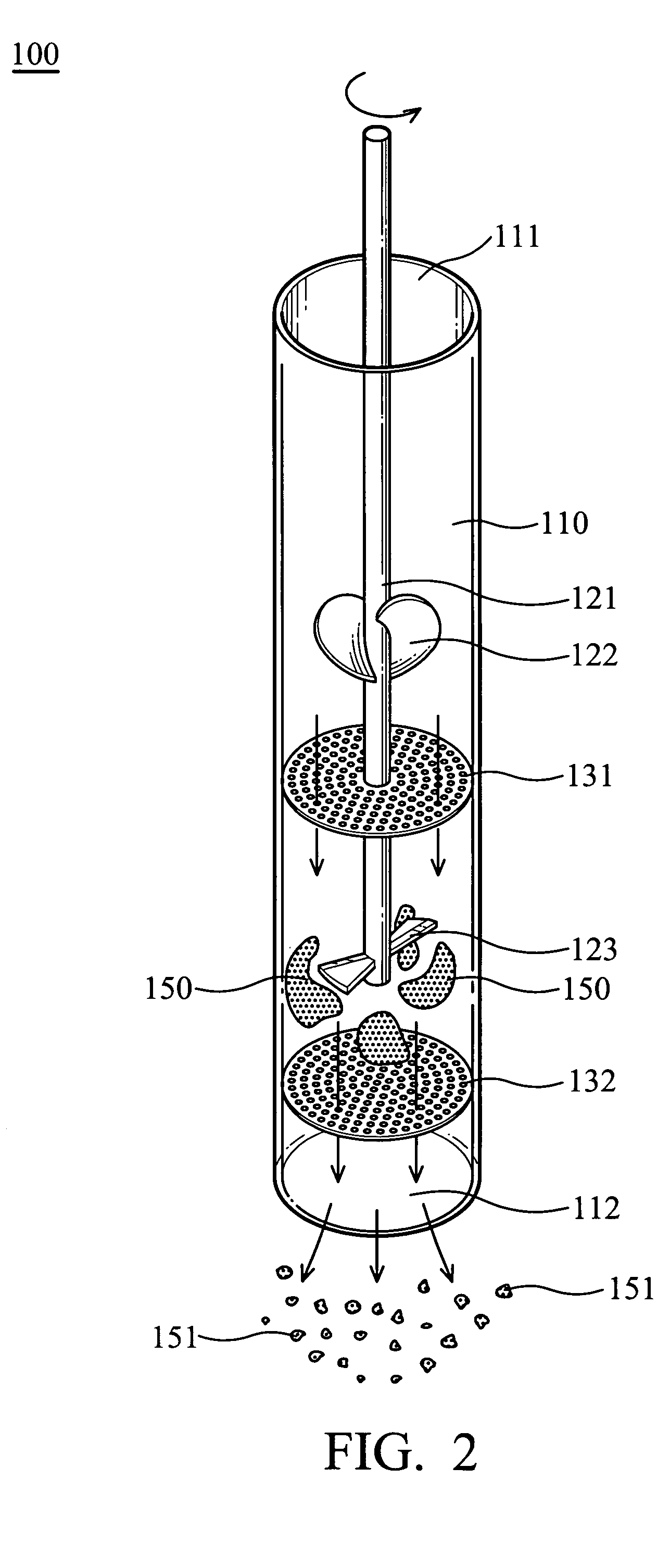Tissue homogenizer
- Summary
- Abstract
- Description
- Claims
- Application Information
AI Technical Summary
Benefits of technology
Problems solved by technology
Method used
Image
Examples
Embodiment Construction
[0013]FIG. 1 shows the main structure of the tissue homogenizer 100 of the present invention comprising a first chamber 110, a driving mechanism 121, a pair of vanes (directing mechanism) 122, a pair of blades 123, a first filter 131 and a second filter 132. The first chamber 110 has a first opening 111 and a second opening 112. The driving mechanism 121 extends into the first chamber 110 from the first opening 111. The vanes 122 and the blades 123 are disposed on the driving mechanism 121 in the first chamber 110. The first filter 131 is disposed between the vanes 122 and the blades 123. The second filter 132 is disposed between the second opening 112 and the blades 123.
[0014]FIG. 2 shows the tissue homogenizer 100 homogenizing tissue pieces 150. The tissue pieces 150 are disposed between the first filter 131 and the second filter 132. The first filter 131 restricts the distribution of the tissue pieces 150. The first chamber 110 is filled with a fluid. The driving mechanism 121 i...
PUM
 Login to View More
Login to View More Abstract
Description
Claims
Application Information
 Login to View More
Login to View More - R&D
- Intellectual Property
- Life Sciences
- Materials
- Tech Scout
- Unparalleled Data Quality
- Higher Quality Content
- 60% Fewer Hallucinations
Browse by: Latest US Patents, China's latest patents, Technical Efficacy Thesaurus, Application Domain, Technology Topic, Popular Technical Reports.
© 2025 PatSnap. All rights reserved.Legal|Privacy policy|Modern Slavery Act Transparency Statement|Sitemap|About US| Contact US: help@patsnap.com



